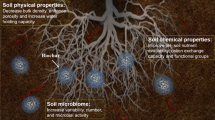Abstract
The main objectives of this study were to determine: (1) the agronomic value of composted and noncomposted residues originated in the Andean-Patagonian region (APR), and (2) whether aerobic incubations provide a reliable index of nutrient availability to estimate application rates. A Xeric Mollisol of the transitional zone between the APR and the Patagonian steppe, amended with composted and noncomposted residues, was employed in laboratory incubations without plants and in a 5-month greenhouse trial with ryegrass. Noncomposted residues were biosolids and fish wastes (FW) collected under farming cages. Composts were obtained from fish offal and biosolids mixed with sawdust, woodshavings and yard trimmings. A commercial compost was also included. In laboratory incubations at similar rates of application (10 g kg–1), net N mineralization (Nmin) was about two-fold higher with the noncomposted (17–23%) than with the composted residues (0–12%) and P release was very high with the FW. Ryegrass yields were closely related to the total Kjeldahl N and mineralized N of the organic residues and weakly related to their P contents (total or extractable). Yields were increased even in the case of composts which exhibited very low values of Nmin (and slight N immobilization) during laboratory incubation, suggesting that the presence of plants enhanced Nmin at rates of 10–20 g kg–1. Soil residual extractable P after ryegrass removal was high for fish-derived amendments and the commercial product, suggesting a potential risk of P pollution when these are applied according to N requirements. Aerobic incubations provided a relatively good index with which to assess adequate rates of application.
Similar content being viewed by others
Author information
Authors and Affiliations
Additional information
Received: 17 July 1999
Rights and permissions
About this article
Cite this article
Laos, F., Satti, P., Walter, I. et al. Nutrient availability of composted and noncomposted residues in a Patagonian Xeric Mollisol. Biol Fertil Soils 31, 462–469 (2000). https://doi.org/10.1007/s003740000192
Issue Date:
DOI: https://doi.org/10.1007/s003740000192




